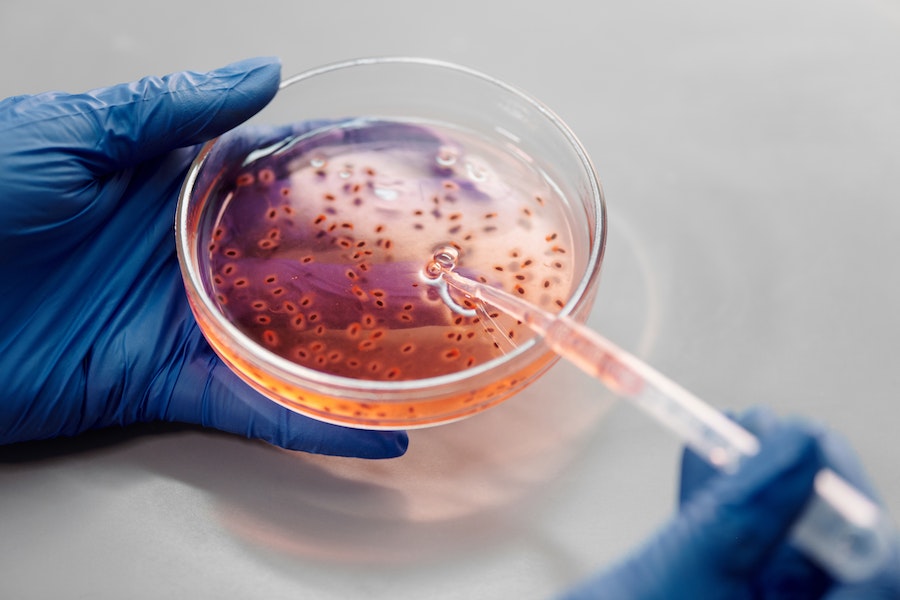Bacteria exist in different life forms on Earth. They can thrive in soil, water, and the human body, among many other environments. Of all the different types of bacteria, less than 1% of its total population can actually be harmful to human beings. Some of the harmless bacteria that live in the body help with digestion and even help provide nutrients. They can even protect the human body by destroying disease-causing organisms.
However, a few bacteria can disrupt the body’s normal functions as they spread out rapidly to many tissues in the body. They give off toxins that damage the tissue and trigger illnesses. Let’s find out more about these common bacterial infections and learn how we can manage them.
Urinary Tract Infection
Urinary Tract Infections (UTIs) affect any part of the urinary system like the ureters, kidneys, urethra, and bladder. Typically caused by Escherichia coli (E. coli), which can be found in the digestive system, UTIs are most common among women since they have a shorter urethra, making it easier for the bacteria to reach the bladder.
The most common symptoms of UTI include frequent and urgent urination, burning sensation, cloudy or bloody urine, pelvic pain, and fever and chills.
To avoid this type of infection, make it a habit to drink plenty of water, wear cotton underwear, and urinate shortly after sexual activity. One of the most popular medications for UTI is Bactrim. It’s composed of two antibiotics: trimethoprim and sulfamethoxazole. To save on bulk buys, look for Bactrim Savings Coupon, which you can use in local pharmacies.
Pulmonary Infections
Pulmonary infections, also known as lung infections, are among the most common bacterial infections. They can be categorized into acute or chronic. Some of the most common pulmonary infections are the following:
Bacterial Pneumonia
Caused by Streptococcus pneumoniae, Staphylococcus aureus, and Haemophilus influenzae, the lung infection called bacterial pneumonia takes form with symptoms including chills, high fever, cough with green or yellowing mucus, chest pain, fatigue, difficulty breathing, and confusion.
Influenza and pneumococcal vaccines are the most common preventive medications for bacterial pneumonia. Other preventive practices you can exercise are frequent handwashing and avoiding close contact with sick individuals, among other good hygiene practices.
Tuberculosis
Primarily caused by the bacteria called Mycobacterium tuberculosis, this lung infection primarily affects the lungs but spreads through the rest of the body if left untreated. Symptoms of this condition include blood-tinged sputum, persistent cough, weight loss, night sweats, fatigue, and fever.
With TB vaccination, you can avoid developing this lung infection. Moreover, if you’re diagnosed with TB, you must complete the treatment and avoid close contact with other people to avoid further infections.
Bacterial Sinusitis
Bacterial Sinusitis is caused by Streptococcus pneumonia and Haemophilus influenzae. The complication of the viral upper respiratory infections triggers bacterial sinusitis. Its symptoms include nasal congestion, facial pain or pressure, headache, fatigue, and thick yellow and green nasal discharge.
You should avoid irritants and practice good hygiene to avoid developing bacterial sinusitis. If you have viral infections, get the treatment promptly so it won’t progress to bacterial sinusitis.
Strep Throat
The bacteria that causes strep throat is Streptococcus pyogenes. Symptoms of strep throat include difficulty swallowing, sore throat, swollen lymph nodes in the neck, fever, and headache.
To avoid strep throat, you must practice good hygiene, avoid close contact with infected individuals, and complete prescribed antibiotics to prevent the spread of the disease.
Gastrointestinal Infections
Gastrointestinal infections trigger inflammation of the gastrointestinal tract, composed of the stomach and the small intestine. This type of infection can be resolved within a few days, while some can be dangerous as this condition prompts dehydration.
Let’s explore the most common types of gastrointestinal infections and some ways to avoid them.
Salmonellosis
Salmonella bacteria primarily cause salmonellosis. It’s mostly caused by contaminated food such as poultry, raw eggs, unpasteurized milk, and infected animals, which humans consume. The most common symptoms include abdominal cramps, vomiting, diarrhea, nausea, headache, and fever.
To avoid Salmonellosis, you should practice proper food hygiene, avoid consuming undercooked or raw eggs and meat, clean kitchen surfaces regularly, and wash your hands before eating.
Campylobacteriosis
Campylobacter bacteria cause campylobacteriosis. These bacteria can be found in contaminated water, unpasteurized milk, and raw poultry. Symptoms of this infection include fever, nausea, diarrhea, abdominal pain, muscle pain, and vomiting.
To avoid this infection, you should use safe water sources, avoid consuming undercooked or raw food, and practice proper food handling.
E.coli Infection
Caused by E. coli O157:H7, a strain of Escherichia coli (E. coli), E. coli infection can be found in unpasteurized milk, undercooked ground beef, and contaminated produce. Moreover, E. coli infection can be transmitted from person to person. Common symptoms include abdominal cramps, vomiting, nausea, diarrhea, and fever.
To avoid E. coli infection, avoid eating undercooked or raw meat, wash fruits and vegetables before consumption, practice good hygiene, and cook ground beef thoroughly.
Skin Infections
Here are some examples of skin infections caused by bacteria, along with their causes, symptoms, and prevention.
Staphylococcus Aureus Infection
Staphylococcus aureus bacteria primarily cause this infection. This bacteria is found in the skin and in the nose. Its symptoms can range from impetigo boils to cellulitis, among other skin infections. Other notable symptoms include pus-filled lesions, swelling, redness, and pain in the affected area.
To avoid this infection, keep your cuts and wounds clean and covered. In addition, avoid sharing personal hygiene like towels and underwear. Other preventive measures include proper hygiene, like taking showers regularly.
Impetigo
Caused by Staphylococcus aureus or Streptococcus pyogenes, impetigo can cause itch and painful red sores that rupture and become honey-colored crusts. This condition can be highly contagious, so avoid contact with other individuals.
Cellulitis
Characterized by red, painful, and swollen skin, Cellulitis can cause fever and chills in most severe cases. It’s caused by Staphylococcus and Streptococcus bacteria penetrating the breaks in the skin.
Diabetes can increase your susceptibility to developing this infection, so treat such underlying conditions to avoid cellulitis. Other preventive measures include keeping the skin moisturized and clean. If you have wounds, make sure to treat them immediately to avoid infection.
Final Thoughts
Bacteria have both positive and negative effects on human health. However, pathogenic bacteria that cause bacterial infections must be avoided through proper food safety practices, proper food hygiene, and vaccination. If you have any symptoms of the above bacterial infections, immediately consult your doctor for proper diagnosis and treatment.








